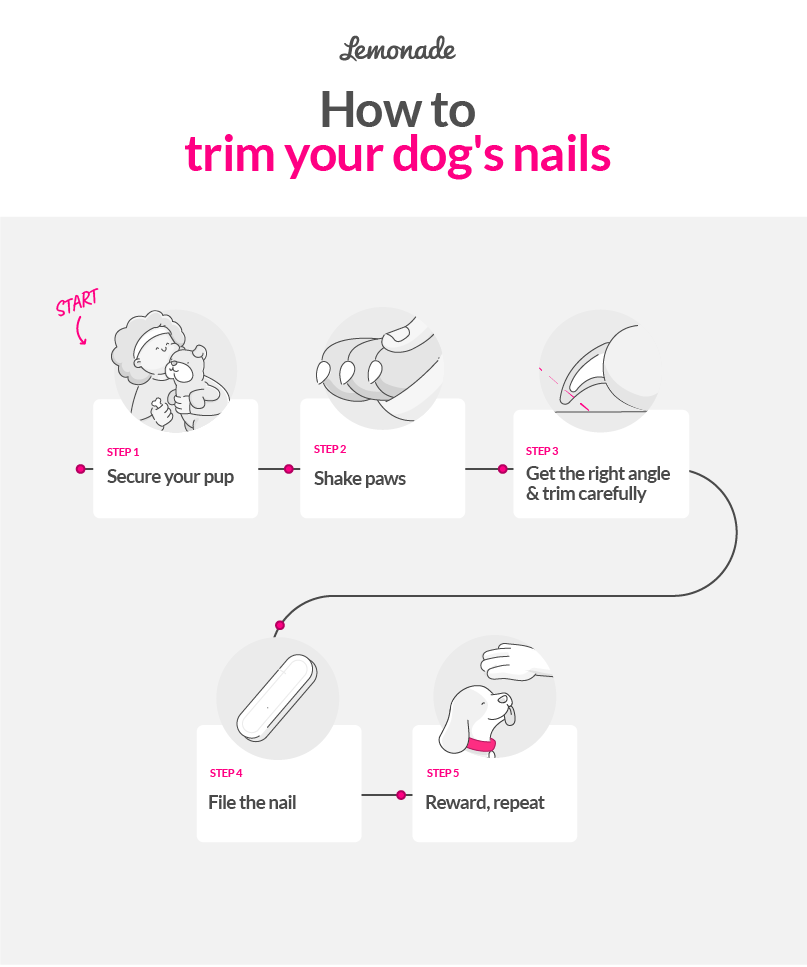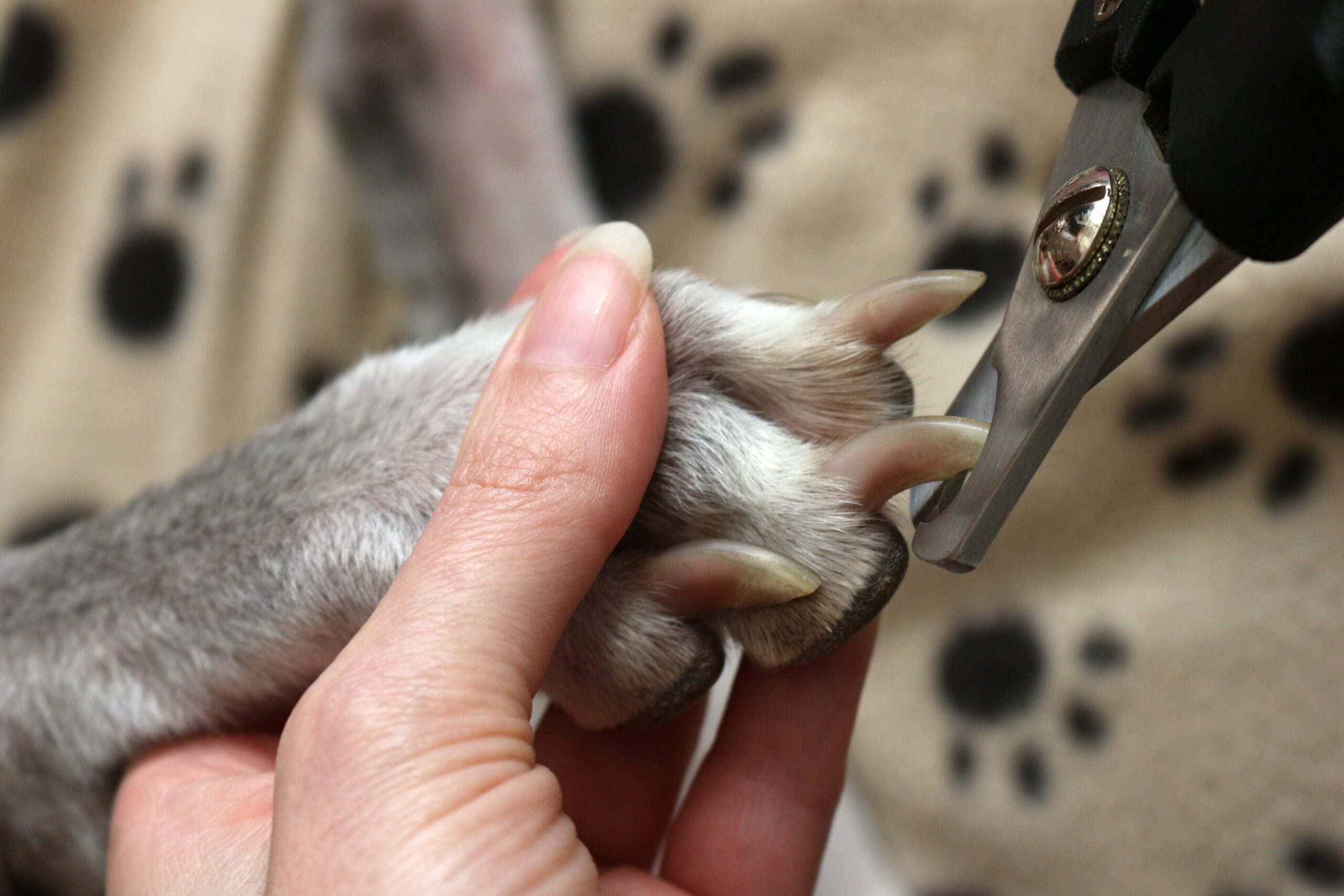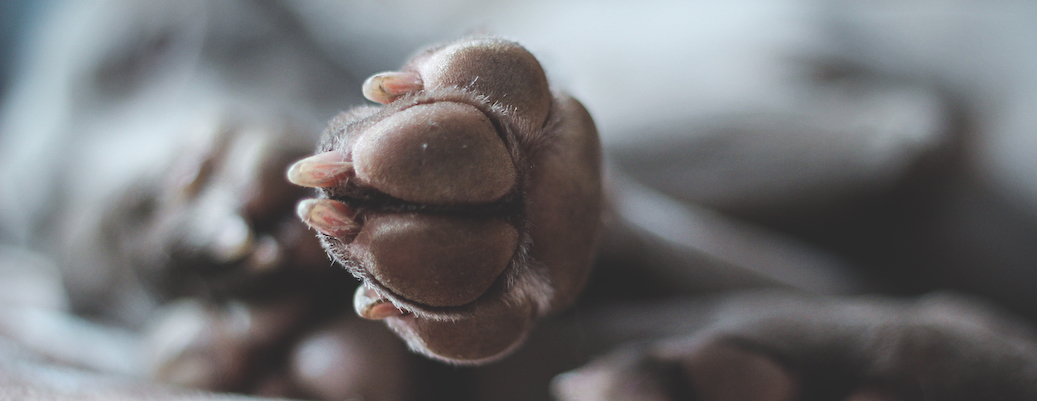Keeping your dog’s nails manicured isn’t about vanity—it’s actually an important part of maintaining their overall health and comfort.
While clipping your dog’s nails can be tricky (and a little anxiety-inducing), it’s in your furry friend’s best interest to make sure they’re kept at a proper length. Learning to do it yourself will save you time and money. We’ll take you through some tried-and-true techniques to keep those precious paws in top shape.
Why do you need to trim your dog’s nails?
Nail trimming is necessary for several reasons, which affect your pup’s health, comfort, and the safety of the people and animals your pup interacts with.
Here’s a break down why trimming your dog’s nails is a smart, necessary part of their routine.
Trimming prevents tearing
Keeping your dog’s nails trimmed isn’t directly going to prevent diseases, but if your dog’s nails get too long, they run the risk of getting caught and torn off their paws. Oof. This puts your pup at risk for some pretty serious pain, limits your pup’s mobility, and could result in a nasty infection.
It keeps them walking proud
Long nails can put pressure on the nail bed as your dog walks, making it uncomfortable for them to strut about freely. If your pup’s nails get too long, they might become less mobile and less active. If you notice that your dog’s nails touch or scrape the ground while standing, you can take that as a sign that it’s time for a trim.
Trim nails = fewer scratches
The longer your pup’s nails, the more likely they are to accidentally scratch you, your family members, members of your fur fam, or their other doggy playmates—not to mention your furniture and floors.
Preparing your pup for a nail trim
While it’s typically a painless experience, most dogs don’t enjoy having their paws touched or their nails trimmed. A squirmy dog might move around in the middle of their pedicure, making the process more difficult, and even painful if you make a wrong move as a result of their wriggling.
Because of this, many people prefer to take their pet to a dog groomer or have their veterinarian clip their dog‘s nails for them. Usually, a professional dog nail clipping will set you back around $10—and will likely involve coaxing your pup into the car.
If you’re planning on going the DIY route, prepare your pup young. Play with and gently massage your dog’s paws as early as possible, ideally when they’re puppies, so they can get used to (and even enjoy) the sensation of you touching their delicate feet.
In addition, gradually introduce your dog to any nail-trimming tools, such as nail clippers, scissors, or nail files. Provide lots of yummy treats to build positive associations with simply being in the presence of these odd-looking gadgets.
If you don’t know which clippers to buy, check out Wirecutter’s list of the best dog nail clippers.
How to cut your dog’s nails
You’ve acclimated your pup to the idea of a trim, and now it’s time to get to work. You have your clippers in hand, a nail file, some treats, and a mission.
Let’s do this thing, step-by-step.

1) Secure your pup
Place your dog in your lap, or depending on your dog’s size and temperament, have someone else help hold them steady for you. Keep your pup content and distracted by giving them a fun bone or a Kong filled with peanut butter.
2) Shake paws
Hold your dog’s paw still by holding the nail between your forefinger and your thumb.
3) Get the right angle & trim carefully
With your other hand, hold the nail clippers at 45 degrees and cut the tip of the nail. Make sure not to clip beyond the natural curve of the nail, as this is where the quick is. This is a bunch of sensitive vessels and nerves that will cause your dog pain if cut (think about what it feels like when you accidentally cut beyond the white part of your nail).
4) File the nail
After cutting, use a thick nail file to smooth down the nail if it‘s still a bit rough. You don’t want a jagged nail to accidentally scratch your furniture, your favorite sweater, or anyone’s kiddos.
5) Reward, repeat
Between nails, give your dog treats and praise to let them know what a great job they’re doing!
Pro tip: You can see where the quick begins on dogs with lighter nails. However, if your dog has dark nails, the difference won’t be as clear. Don’t fear! As long as you cut below the natural curve, you won’t run the risk of cutting the quick.

How often should you cut your dog’s nails?
On average, dogs’ nails should be trimmed once a month or so. However, it really depends on how fast your dog’s nails grow, and if they easily get worn down based on their routine and environment.
Dog owners who consistently walk their dogs on hard surfaces, like concrete or pavement, may find that their dogs’ nails stay at a good length for longer periods of time. This is because the ground acts as a nail file, and shaves nails down as they walk.
Dogs that do most of their walking on softer surfaces, like grass, will probably need their nails trimmed more often than their city-slicker counterparts.
Oh no! I accidentally clipped my dog’s nail too short!
Cutting your dog‘s nails too short can be jarring and upsetting to both you and your dog. You‘ll know you‘ve cut the nail too short if your dog yelps in pain and starts bleeding.
No, you are not a terrible person, and yes, your dog will forgive you.
The best way to remedy a bleeding nail is with styptic powder, which is readily available at pet stores or online. This powder contains benzocaine, which acts as a pain reliever, and also stops the bleeding by contracting the blood vessels in the nail.
To apply styptic powder, gently dip your dog’s nail into the powder, or apply it with a moistened Q-Tip or applicator. Then, apply pressure to the nail for 30 seconds, until the bleeding stops.
Keep in mind that styptic powder can cause a stinging sensation at first, so don’t be alarmed if your dog tries to squirm away.
Before we go get our own nails done…
As a dog owner, you’ll do anything to keep your dog happy, healthy, and the best they can be. Besides giving them proper nutrition, getting them vaccinated, and taking them to their regular vet appointments, maintaining your dog’s hygiene and grooming is an important (and often overlooked) part of their overall health.
By learning more about caring for your dog’s nails, you’re taking a small step toward mastering your dog’s overall health and wellness.
If you’re looking for more ways to take initiative in providing your pup the best possible care, check out Lemonade pet insurance for dogs and cats. It’s customizable, affordable, and can even help animals in need via our innovative Giveback program.




